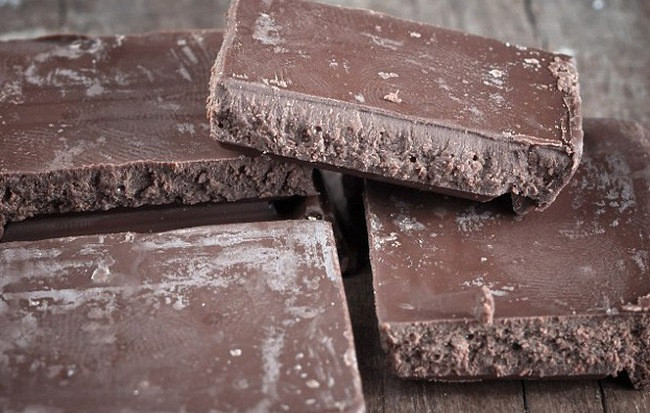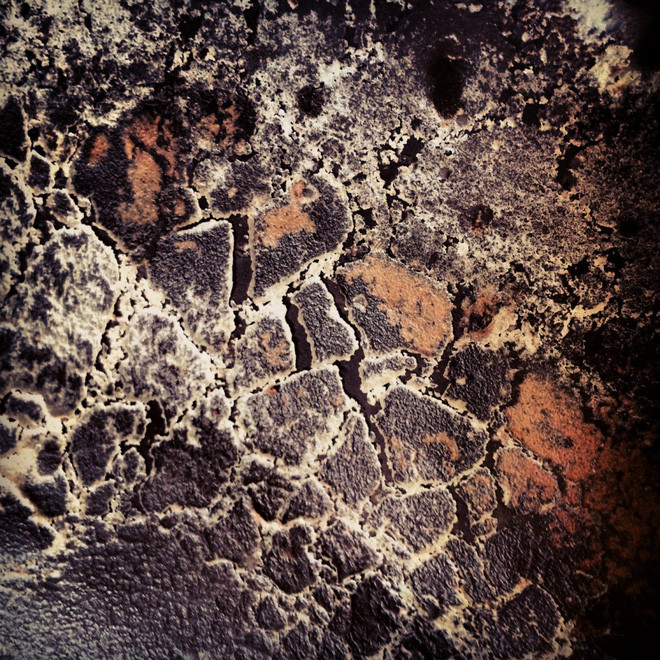Detecting white patches on chocolate surfaces, do you eat them or throw them away?
You must have seen white streaks on the chocolate - don't throw away chocolate when you see it. Scientific researchers have revealed to you the solution.
With sweet believers, like chocolate is nothing more interesting when you get your hands peeled off and slowly sip, enjoy them?
Oh but wait, why does this new chocolate have white markings? Chocolate is moldy, or what are they doing, obviously I bought it and they are well preserved.

"Ugly" white parts make people worry about their chocolate being . damaged.
Unveiled a bit, every year in the world there are millions of kilograms of chocolate thrown away just because these candy bars appear this less aesthetic white plate. But are you curious where these white spots are?
Studies have revealed that this strange phenomenon, in fact, is caused only by the fat molecules in chocolate "surfacing" on the surface and aggregating into white streaks (or "fat bloom") - when you tell Administer them at inappropriate temperatures.
Specifically, the environment is too hot or too cold, chocolate will appear "fat bloom" - and that is the reason why we fear that the quality of candy bars is problematic. According to 4's Food Unwrapped channel, thousands of customers have complained to confectionery companies when the chocolate they buy has "ugly" white patches and forgets that they have preserved the wrong way.
Jimmy Doherty 0, the editor of the channel, explored the source of the problem when he and the scientists at Hamburg University analyzed candy bars that appeared white with the world's largest X-ray projector.

Image of fat molecules around cracks on the surface of the chocolate bar.
The image results show that white patches formed right at the cracks - demonstrating that fat molecules self-separate and float to the surface when chocolate is not properly stored.
According to scientists, this phenomenon will not affect the quality of the chocolate, and they also suggest that you should preserve your chocolate at temperatures between 14 -18 degrees Celsius is most suitable.
Although chocolate manufacturers are also actively finding solutions to avoid this unwanted phenomenon.
But the best solution is to keep chocolate in the right temperature when you are not using it, as this will help fat molecules not be separated inside the chocolate. And your chocolate will look as beautiful as when you bought it at the store.
- Eating chocolate makes you smarter
- 9 effects of chocolate on health
- This is why chocolate is so addictive
- Making chocolate does not melt at 40 degrees Celsius
- Come to France to enjoy chocolate insects
- Low-fat chocolate made from seaweed
- Decoding the flavor creates the dominance of chocolate in a scientific perspective!
- Chocolate is going to be extinct? This technology may be the answer
- Vietnam owns the best chocolate in the world
- Chocolate made from fruit
- How is the famous Vietnamese Chocolate made?
- The technology of producing 3D chocolate is extremely poisonous
 'Fine laughs' - Scary and painful torture in ancient times
'Fine laughs' - Scary and painful torture in ancient times The sequence of numbers 142857 of the Egyptian pyramids is known as the strangest number in the world - Why?
The sequence of numbers 142857 of the Egyptian pyramids is known as the strangest number in the world - Why? History of the iron
History of the iron What is alum?
What is alum?